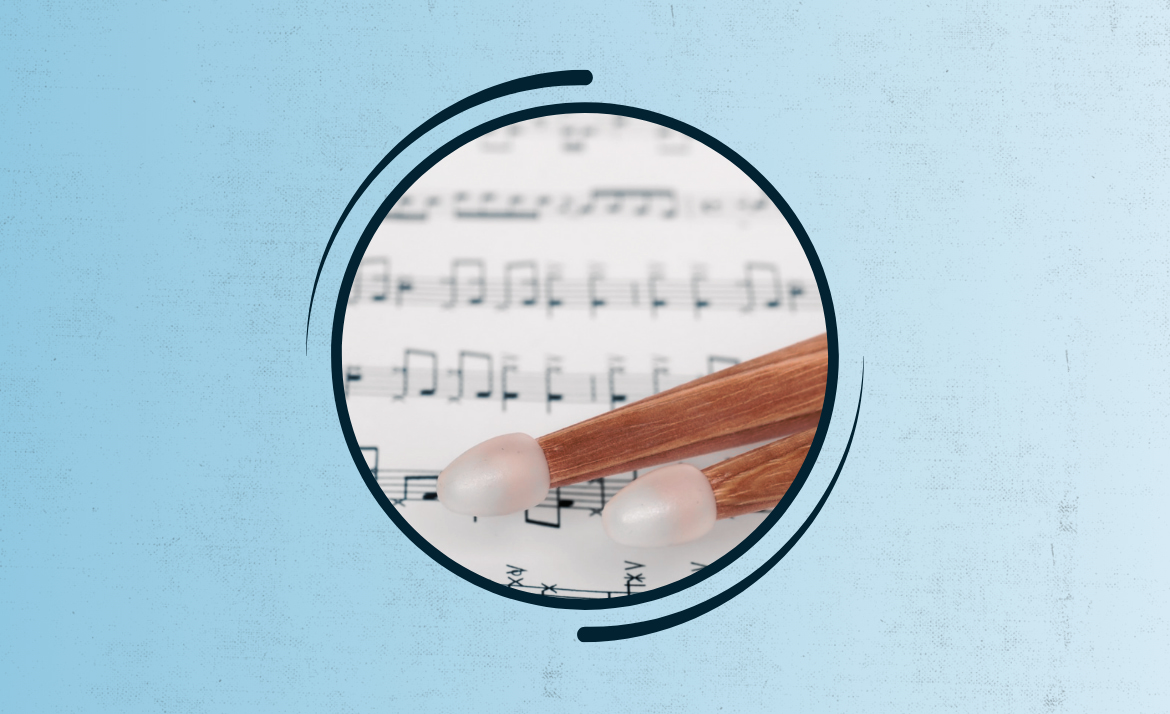Most drummers have felt the frustration of rushing a fill or dragging the last bar. Building solid time isn’t luck; it grows from focused habits, like consistent metronome practice. Using a metronome well unlocks accuracy and groove you can trust in any stage or studio situation.
Timing isn’t just for soloists or advanced musicians. Drummers are the backbone of every ensemble. Precise time lays down the foundation for every song, genre, and rehearsal. Even a tiny slip can throw everything off balance, and that’s why dialing in your sense of pulse is essential.
If you’re buying your first metronome or looking to push your precision to the next level, this article offers hands-on strategies tailored to drummers using metronome practice. Discover practical routines, mix-ups for growth, and real-world tips to carry into your next rehearsal or performance.

Building Steady Time with Intentional Click Practice
Clarity and consistency come from a metronome practice routine that targets each aspect of your timing. Start by setting the click at a moderate tempo—think 80 BPM—on the quarter note.
Commit to locking your hi-hat and snare with each click as you warm up. This calibration helps your muscles internalize the steady pulse before you layer in more complex patterns, fills, or hand-foot combinations.
Selecting Useful Metronome Modes for Drummers
Choosing the right metronome mode shapes your ability to adapt in live or studio settings. Start with simple downbeat clicks and progress to subdivisions like eighths or triplets for varied exercises.
Built-in accent functions let you simulate different groove feels. Use one accent on beat 1—as if the click itself were a kick drum—to reinforce the song structure. Practice dropping the click after a few bars to build trust in your own inner time.
Try this checklist: Pick a comfortable groove, set a basic click, play in sync, shift to subdivisions, then mute the click for a measure. Repeat, switching tempos and patterns until the groove locks in your muscle memory.
Progressing from Basic to Advanced Subdivision Drills
Once quarter notes are under control, move to alternating between eighths and triplets. Changing subdivisions within the same exercise taxes your internal pulse and widens your versatility.
Create drills like: play two measures of quarter notes, switch to two measures of triplets, then back. These quick transitions keep your mind focused and ears sharp—ideal conditioning for improvisational or complex music.
Use a script: “Quarter notes for two bars, triplets for two bars, repeat at 60 BPM.” Adjust speed based on comfort, keeping the click steady as your reference point, not a crutch.
| Metronome Mode | Best For | Practical Example | Next Step |
|---|---|---|---|
| Quarter Note | Basic Steady Time | Straight grooves and warm-ups | Shift to eighth notes for more challenge |
| Eighth Note | Faster Tempos | Double-time rock beats | Try dropping back to quarters mid-play |
| Triplets | Jazz & Shuffle Feels | Jazz ride work or blues shuffles | Switch between shuffle and straight in a single drill |
| Accent Mode | Simulating Grooves | Accent on 1 for funk grooves | Move the accent to 2 or 3 for variations |
| Mute/Gap Click | Testing Internal Time | Alternate one bar click, one bar silent | Increase silent bars as accuracy improves |
Structuring Drumming Sessions for Reliable Improvement
Consistency needs a framework. Scheduling dedicated metronome practice into your routine trains your sense of groove. Start and end every session with five minutes of focused click work, no matter what else you play.
Keep a log of tempos and patterns that challenge or frustrate you. Come back to these spots each session, tracking small milestones to see your growth over time without losing momentum.

Sheet Music Reading: A Beginner’s Guide for Drummers
Discover the best step-by-step guide for beginners learning to read drum sheet music.Establishing a Routine that Sticks
Write schedules on paper your eyes see every day. For example: “Practice doubles at 72 BPM for five minutes, slow them by five BPM, and repeat.” Having this routine written out builds accountability and instills steady progress, not random improvement.
- Play quarter notes on the hi-hat at 60 BPM to start, focusing on matching every stroke to the click. Over time, move the click to different drums to strengthen coordination.
- Practice switching between 4/4 and 6/8 time signatures, keeping the click steady. This hones adaptability for real band situations, no surprises when time changes mid-song.
- Use slow tempos for rudiment work, pausing to check accuracy every eight bars. This method exposes the small gaps in technique that cause the feel to rush or drag in performance.
- Alternate hands on snare while tracking your stroke height with each click. Focus on both volume and speed, so the backbeat remains powerful without losing time.
- Try ‘gap click’ practice: one bar on, one bar off. This builds your reliance on internal time, crucial when the band or monitor mix gets chaotic at gigs.
George tracks his daily metronome sessions in a notebook, texting a selfie each day he completes his routine. His steady attendance at sessions inspires his friends to follow his lead, building discipline through community.
Making Adjustments to Fit Your Drumming Goals
Drummers with different goals need tweaks to their practice plan. Someone eyeing studio work should use ultra-slow tempos with complex patterns. Gigging drummers on fast songs should chase precision at top tempos.
- Test complex fills under the metronome’s click, ensuring every snare ghost note lands true. Use slower tempos to check for unevenness before speeding up to performance level.
- Divide your session: 10 minutes for basic grooves, 10 for fills, 10 for improvisation—all tracked to the metronome. This structure prevents random jamming from overtaking your progress.
- For jazz, place the metronome on just 2 and 4. It helps you lock in with the swing feel, mimicking a real band’s rhythm section when playing standards or walking ballads.
- Alternate between stickings every week, but always to a click. Variety prevents boredom, helping to cement steady timing across all your rudiments and personal licks.
- Self-record your sessions, then listen for spots where the click and your hits don’t sync. This unbiased feedback is specific, showing exactly where you need to focus in later sessions.
Modify your metronome practice routines as your confidence improves. The result: more freedom when grooves get complicated and fewer nerves about dropping the beat live.
Turning Metronome Workouts into Musical Application
Moving metronome practice off the pad and onto the full kit bridges the gap between chores and actual music-making. Break down sections of real songs and apply the click to every groove, fill, and transition.
Let every metronome practice session simulate a gig: run intros, chorus changes, and outros at various tempos, locking each to the click until they’re automatic and unshakable under pressure.
Exploring Song-Specific Click Placement
Place the metronome to reinforce a song’s groove, not just the downbeat. For funk, set accents on beats 2 and 4 to match the snare backbeat. For reggae, move the accent to 3.
You could rehearse a pop song’s intro with quarter notes, then switch to eighths during the chorus. Each change replicates the real flow of a live performance—keeping the transition tight and convincing, even under stage lights.
For multi-part songs, slow down the metronome and work through bridges or break sections until every member feels confident swapping parts on the exact click.
Training for Dynamic Volume Control
Use very soft singles on the snare with the metronome at low volume. This trains your touch—no matter how quiet or loud you play, the groove stays locked. This is what separates experienced drummers from the pack.
Next, alternate between ghost notes and accented hits, always tracing each dynamic change to the steady click. That discipline transforms a flat backbeat into a living, breathing groove without sacrificing precision.
Practice whole crescendos and decrescendos while matching the click. Over a few bars, bring up the volume and then pull it back, always ensuring the timing never falters even as the dynamics shift.
Overcoming Common Obstacles During Metronome Drills
Building timing takes grit—expect pushback from your muscles and mind. When fatigue or frustration sets in, break drills into ten-minute bites. One focused drill session always beats an hour of sloppy, distracted reps.
Boredom sometimes creeps in after repetitive click practice. Shake this by changing drum assignments: sometimes play the metronome on the ride, other times on the hi-hat. Variety refreshes focus.
Staying Motivated with Realistic Progress Markers
Use visible milestones to keep frustration away. For instance, increase your top clean tempo by just five BPM each week. Write each new tempo in your logbook, marking with a check or sticker for motivation.
Set mini-challenges: perform a new fill clean at 65 BPM, record it, then send it to a friend for feedback. Friendly peer review reinforces consistent progress and keeps spirits high, even on tough days.
If you ever catch yourself rushing the click, pause. Take three deep breaths, reset, and then play at a slightly slower tempo. Relieving tension resets accuracy—helpful for drummers dealing with live performance nerves.
Navigating Physical and Mental Fatigue
Drum metronome practice can strain your wrists or mind. Schedule short, intentional breaks every 15–20 minutes. Stretch your hands, close your eyes, and focus on steady breathing to combat stiffness and boost energy.
When practice gets stale, swap the exercise for a new one. If you’ve drilled snare rudiments all week, switch to bass drum coordination or tom grooves. The brain stays sharp when the routine surprises you occasionally.
Recognize signs of burnout: sloppy sound, loss of focus, or soreness. If these appear, end the session early or swap to listening—quality always beats mindless quantity, especially with timing drills on the drums.
Using Technology to Enhance Your Timing
Modern apps and metronome devices give new flexibility to drummers aiming for tighter time. Tap tempo features help match new song ideas quickly, and programmable accents let you tailor routines for any genre or technical focus.
Backing tracks with embedded click tracks can be imported into headphones or speakers, letting you marry the strictness of a metronome with the feel of full-band music, right from your practice space.
Automating Progress Tracking for Consistency
Choose metronome apps that log play history and automatically chart tempo growth. Use graphing tools to visualize your progress—seeing a line move upward keeps your spirits up and progress undeniable after weeks or months.
- Record daily tempos and note which coordination patterns challenged you most. Check these again after a week to see if the difficulty eases. This self-coaching builds honest feedback into every session without outside pressure.
- Automate reminders in your phone—”10 minutes of gap click practice after dinner.” These nudges keep consistency high and excuses low when energy or motivation dips, especially after a long day.
- Export rhythm logs as PDFs you can review monthly. Celebrate every goal hit, using victories to fuel the next stretch of click-based improvement on the kit.
- Create a long-term playlist of click-backed recordings. Compare early reps to recent ones for audible proof of tighter grooves and more confident fills, even on your worst days.
- Set up micro-challenges: “Can I hold the click at 55 BPM for 30 bars, without rush?” Treating timing as a game builds discipline, not dread, into every metronome practice cycle.
Whether you use an analog device or a modern app, treat technology as a coach and scorekeeper, not just a tick box. Smart adjustments always follow specific, realistic data—not vague impressions.
Connecting Solid Time to Band and Performance Settings
Reliable time makes you every band’s favorite drummer. Start band rehearsals with everyone following a click through speakers, so transitions and tempo shifts stay sharp through each setlist.
Playing to a click at gigs is practical only when your own metronome practice feels effortless, so internalize every groove in solo practice first. The payoff is tighter ensembles and more relaxed performances.

Collaborating Around the Click
Share your practice log or timing milestones with bandmates. Invite them to suggest tricky transitions or tempo jumps. Their input supports your growth and shows you’re devoted to bringing your best to every rehearsal.
Use metronome-based warmups at the start of rehearsals: five minutes of everyone soloing in time, then coming together. This exercise builds shared trust in the click—vital for tight intros and crisp stops.
If bandmates struggle, advocate for sectional practice: “Let’s try that closing riff at 80 BPM, click running, until no one drags.” Focus on camaraderie, not criticism; tight time benefits everyone on stage.
Handling Live Gigs and Recording Sessions
Before shows, run your trickiest fills under the click in headphones, just as you would during a recording session. This preps your nerves and locks in your internal pulse before you hit the stage.
When recording, insist on a few warm-up takes to a click track alone before layering band instruments. Even seasoned pros run drills this way to guarantee each session has a rock-solid backbeat.
If nerves hit on stage, close your eyes for a beat or two, recall your metronome routines, and feel your body settle back onto that familiar internal pulse. Metronome practice turns anxiety into confidence, one measure at a time.
Developing Groove and Precision for Life
Throughout your drumming journey, metronome practice evolves with you. Start simple, then stretch your skills into subdivisions, dynamic control, and creative song arrangements. Each repetition earns more reliable time and deeper groove.
Every focused drill—whether with sticks on a pad or kicks on the bass drum—reinforces musical habits that pay off beyond the practice room. Confidence in time sets you apart, allowing creative playing that audiences feel and remember.
Treat each metronome session as a small investment in musical freedom. The more reliable your internal clock, the more you can listen, adapt, and lead any band or session. Precision built with the click brings every performance to life.



